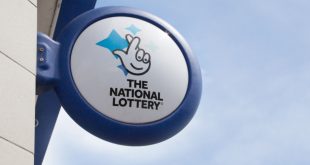Whilst the UK currently boasts no major eSports stars, abroad the top players are hugely popular, and some can even be classed as celebrity figures within this niche but expanding market.
They can earn considerable money from appearances, and live streaming their gameplay. The Vice eSports documentary featured an example of such ‘eSports superstars’; the popular US team Cloud 9. This is the same documentary that expressed the growing popularity of the sport in stating the fact that League of Legends now has more players than there are people in France.
The money generated through various avenues by eSports has quickly trickled down to the players themselves meaning a talented eSports player can become a millionaire. Indeed the current top five players in terms of earnings have all surpassed the one million dollars mark; not bad for a sport which many haven’t even heard of yet.
-
Hao – Chen, Zhihao (pictured) – $1,218,896m (£785,123)
-
Banana – Jiao, Wang – $1,192,049m (£767,830)
-
sanSheng – Wan, Zhaohui – $1,186,074m (£763,982)
-
Mu – Zhang, Pan – $1,174,610m (£756,597)
-
xiao8 – Zhang, Ning – $1,152,228m (£742,180)
Statistics courtesy of http://www.esportsearnings.com/players.
As it stands the current top five individual earners are from China. Below are some of the biggest teams including what they’ve earned thus far.
From the left across; the team logos for Newbee, Evil Geniuses, and Natus Vincere. Their combined eSports earnings are $12,714,823m (£8,189,958m).
- Newbee (China) – $5,523,714m (£3,557,972m)
- Evil Geniuses (USA) – $4,189,076m (£2,698,296m)
- Natus Vincere (Ukrainian) – $3,002,033m (£1,933,689m)
The eSports teams, and stars, themselves are gaining considerable celebrity status, and sponsorship and marketing deals are widening across the field. The Superdata eSports brief found that in the North American sector alone $111m (£71m) has been invested via corporate sponsorship.
Many players are realising their own earning potential too. The popular and successful League of Legends player, CaoMei (Wei Han-Dong), retired in 2014 and now earns around $800,000 per year by streaming 90 hours of gameplay per month via ZhanQi TV.
When CaoMei streams ‘he gets at least 100,000 viewers’, and his fans are able to talk to him directly. This level of access is something upon which eSports thrives, and also something which makes it unique in competitive sporting terms.
Key figures…
-
Corporate sponsorship in North American eSports is currently $111m (£71m)
-
$42.30 (£27) is the average spend per transaction on eSports merchandise in Western markets
-
Global eSports audience is 134m
-
Who’s watching? It is a male dominated playing field. In US eSports the core audience, that is the regular viewers, are predominantly male (87%) and largely under the age of 35. They’re also generally affluent, with an average household income of over $76,000 (£48,900) a year.
Significant investment in prize pools (tournament cash prizes) for the popular game Dota 2 has also led to a notable increase in user activity and numbers. The returns are also already evident; fans have already contributed 25% more during the 2015 Championships than they did last year.
|
Year |
Prize Pool |
Active monthly users at time of tournament |
|
2012 |
$1.6 m (£1m) |
751,758 |
|
2013 |
$2.9m (£1.8m) |
6,218,943 |
|
2014 |
$10.9m (£7m) |
9,640,848 |
All figures courtesy of eSports Market Brief May 2015 (http://www.superdataresearch.com/blog/esports-brief/)
The latest figures stated in the Superdata market brief show that eSports is continuing to grow, both financially and in terms of viewers, at a very exciting rate. It now boasts over 134 million viewers worldwide, and moreover generates a total revenue exceeding $612m (£397m).
As the Superdata map highlights the Asian (largely Korean and Chinese) markets continue to dominate, whilst the North American market is also a major contributor at $143m (£92m). It can be argued that just as Sepp Blatter once titled India the ‘sleeping giant’ of world football, Europe could well be the equivalent in eSports. It already amasses a considerable $72m (£46m) of revenue generated, and with companies such as Gfinity investing heavily in the UK market, this will near inevitably rise in the future.
Gfinity’s Head of Partner Relations, Martin Wyatt, said: “European eSports as a whole is experiencing huge growth as everyone knows and there are already examples of how the viewership in Europe is hitting staggering heights.”
He continued: “So, in my opinion, it won’t be long before we’re on a par – and wouldn’t it be cool if the UK was the envy of the eSports world?
At present the eSports European hubs are located in Scandinavia and Ukraine. Esports gaming has been popular here for some time, with cafe culture predominant in many of these societies, the Inferno Online internet cafe in Stockholm is particularly renowned within these circles. Connected to this is the Stockholm eSports Arena, which has hosted events, outside of events it’s also notable that it’s open only to those over the age of 23 in order to maintain a calm and professional environment. ESL, the European eSports organisation are reportedly considering hosting a major large scale tournament in the city in 2016.
In terms of one off events below are some of the most impressive locations to host eSports tournaments thus far.
- The Sang – AM World Cup Stadium
- League of Legends 2014 World Finals
- 45,000 fans
Wembley Arena
- London, England
- European LCS Week 5
- 12,500 fans
Key Arena
- Seattle, USA
- Dota2 The International 2014
- 10,000 fans
Of course with eSports still in its relative infancy one stumbling block to its expansion at present is the lack of widespread, professional organisation. That is changing rapidly however with the successes of the three major organisations detailed below.
- Europe – ESL (est. 1998)
- North America – Major League Gaming (MLG) (est. 2002)
- South Korea – Korean eSports Association (est. 2000)
None of these professional organisations have yet seen their 16th birthdays, yet the accomplishments they’ve achieved pre-adulthood are notable. This says as much about the drive of the individuals behind these companies, as it does the need eSports fanatics worldwide has for such platforms.
For the most part they are the ones that facilitate and organise tournaments and leagues, both on and offline. The impressive nature of their physical homes also shows much about the potential of the sport as a whole. The MLG boasts a 14,000 square foot stadium in Columbus, Ohio. In Europe there’s a dedicated eSports arena in Stockholm, Sweden, as well as the new Gfinity/Vue collaborative stadium in London, England, whilst Kiev in Ukraine has long bossed the European scene with its CyberSport Arena opening its doors in April 2010.
The next step?
From a marketing perspective the fact that the vast majority of the audience, and indeed those playing, are employed, affluent men between the ages of 18 to 35 years, there is certainly an appeal.
This is a demographic which has become hard to reach via conventional advertising means, and yet remains one with considerable financial freedom. Companies such as Coca-Cola and T-Mobile USA have already sponsored tournaments in Europe and the US respectively. Doubtless this type of sponsorship will continue to grow as the audience does, which in turn allows the industry further growth potential as the various platforms receive investment. With ever improving production through streaming, physical tournaments and the organisation, and sheer amount, of leagues it can be expected that interest will keep growing.
The sport is a new but increasingly popular betting market too, Pinnacle Sports, based in Curacao, took their one millionth eSports bet in 2014, and will be expanding their market offerings throughout 2015 and beyond.
The statistics presented in the Superdata brief on this aspect show that eSports, as an industry, is booming. Since 2011, as prize pools have increased, the global audience has increased yet further.
As long as the three big organisations continue to maintain an up growth in investment the data suggests that the audience will be receptive. It seems inevitable that there is a further vast, and as yet untapped market out there, not least in terms of female fans and players. This is something which is being looked into however with the likes of Blizzard and the International eSports Federation having started to host women only events to encourage female players and spectators.
Speaking to The Mary Sue, eSports Team Liquid’s Matt Weber stated: “It’s hard for up-and-coming women to get practice and have people train with them seriously – just as it’s difficult for women eSports reporters or organizers or streamers to have fans/pros take them seriously for their career.
What is arguably most exciting in terms of the further expansion of eSports however, is the work being done on the eradication of eSports’ reputation in some fields as a ‘non-sport’.
 The International Association of Athletics Federations (IAAF) will partner with the International eSports Federation (IeSF) to work alongside each other on the Athletics for a Better World Initiative. The details of this mean that the IAAF will help in terms of formulating training and fitness programmes for professional gamers, whilst the IeSF can offer access to “millenials around the globe who play and watch eSports” via streaming platforms such as Twitch.
The International Association of Athletics Federations (IAAF) will partner with the International eSports Federation (IeSF) to work alongside each other on the Athletics for a Better World Initiative. The details of this mean that the IAAF will help in terms of formulating training and fitness programmes for professional gamers, whilst the IeSF can offer access to “millenials around the globe who play and watch eSports” via streaming platforms such as Twitch.
The Deputy General Secretary of the IAAF, Nick Davies, had this to say regarding the partnership: “E-Sports is one of the fastest growing sports in the world and we’re delighted to become the first governing body to partner with the IeSF.”
The legitimacy gained from such a partnership, should prove endlessly beneficial to eSports….. Watch this space.
_______________________________
Article Sources index
- http://www.superdataresearch.com/blog/esports-brief/
- http://www.ibtimes.co.uk/gfinity-wants-build-second-uk-esports-arena-pro-gaming-1491170
- http://www.ongamers.com/articles/report-more-than-70-million-people-watch-esports-worldwide/1100-1157/
- http://www.cityam.com/212874/can-professional-video-gaming-take-uk-we-visit-opening-night-first-esports-arena-find-out
- http://www.cityam.com/214175/iaaf-teams-esports-governing-body-community-programme
- http://www.nytimes.com/2014/08/31/technology/esports-explosion-brings-opportunity-riches-for-video-gamers.html?_r=
- http://www.themarysue.com/men-only-esports-competitions-nope/














